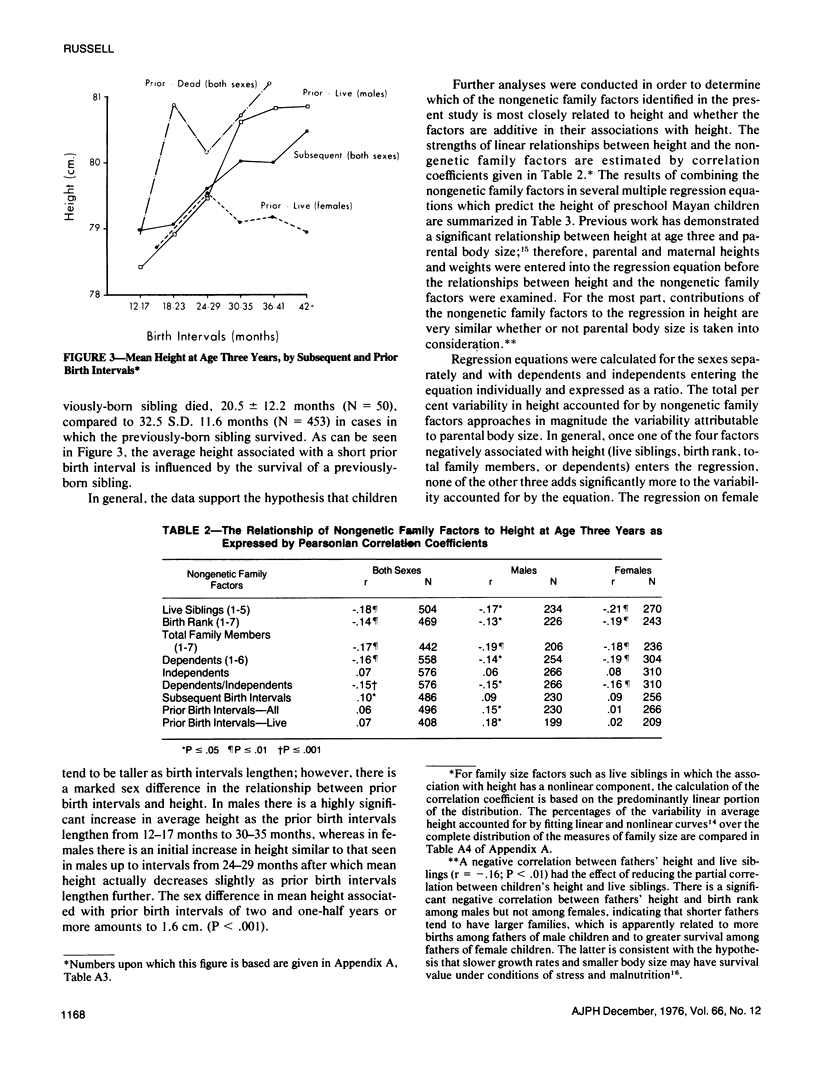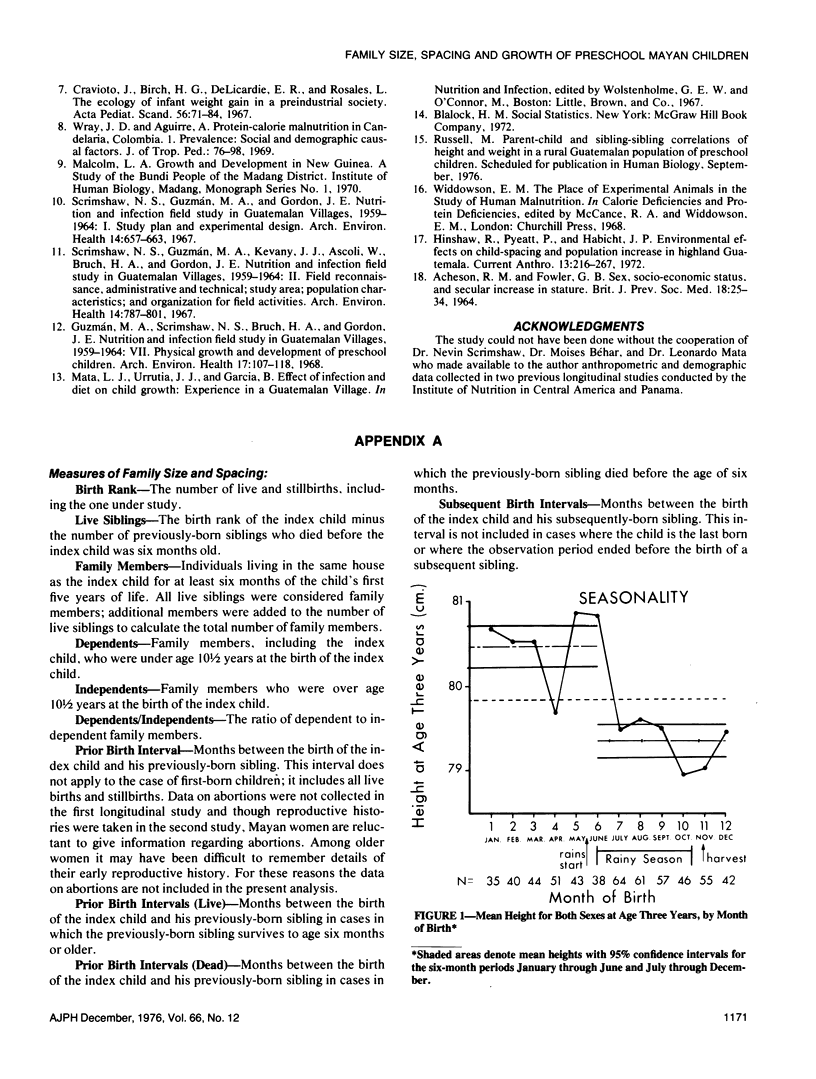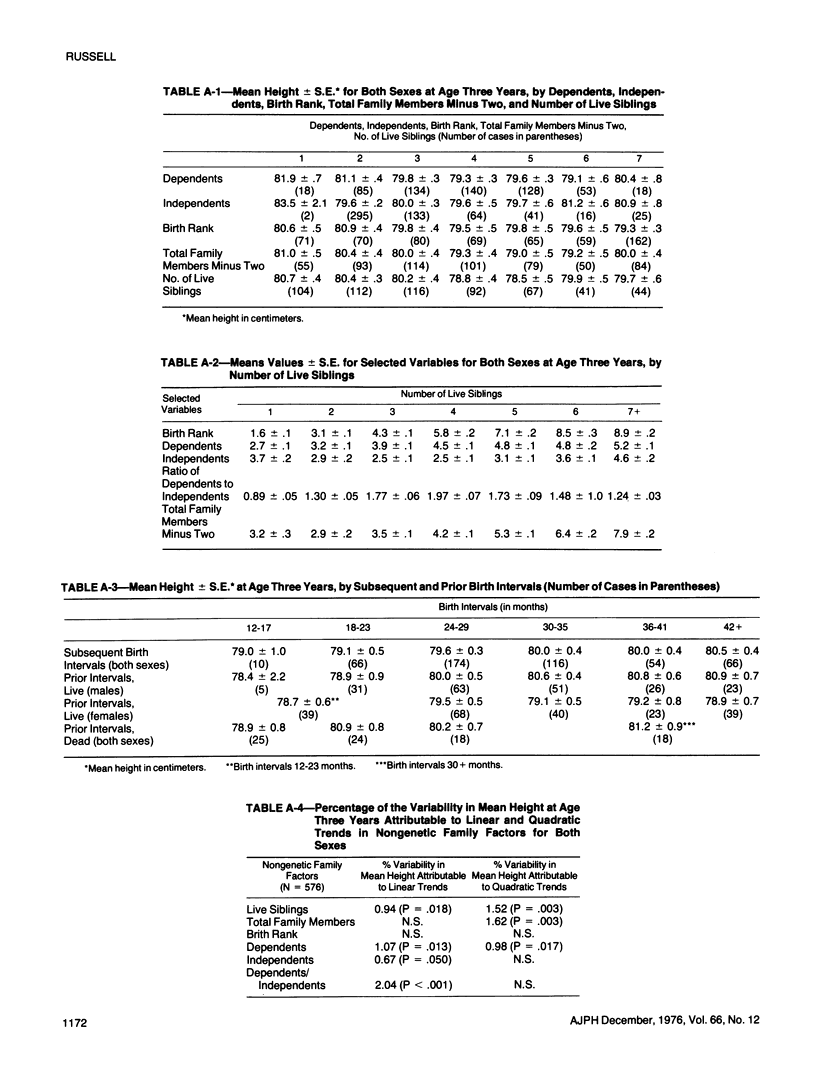Abstract
The height of preschool Mayan children is analyzed with respect to family size and the spacing of their siblings, controlling for parental heights and weights. Data on 643 cases were abstracted from the records of two previous longitudinal studies on the health of children under age five years living in the highlands of Guatemala. Height at age three years is estimated from the linear regression equations fitted for each child to measurements of height repeated at three-month intervals from ages one to four years. Family size is expressed in terms of birth rank, live siblings, and the number of dependent and independent family members. Family spacing is measured as birth intervals, i.e., the number of months between the birth of the index child and his previous and subsequent siblings. Most previous studies have reported that height decreases as family size increases. This study shows that Mayan children from both small and large families are taller than those from middle-sized families. Evidence is presented to support the hypothesis that children in large families are relatively tall because their early-born siblings contribute to the family fortunes. Birth intervals are positively correlated with height. The findings are discussed in terms of their implications for family planning.
Full text
PDF







Selected References
These references are in PubMed. This may not be the complete list of references from this article.
- ACHESON R. M., FOWLER G. B. SEX, SOCIO-ECONOMIC STATUS, AND SECULAR INCREASE IN STATURE, A FAMILY STUDY. Br J Prev Soc Med. 1964 Jan;18:25–34. doi: 10.1136/jech.18.1.25. [DOI] [PMC free article] [PubMed] [Google Scholar]
- GRANT M. W. RATE OF GROWTH IN RELATION TO BIRTH RANK AND FAMILY SIZE. Br J Prev Soc Med. 1964 Jan;18:35–42. doi: 10.1136/jech.18.1.35. [DOI] [PMC free article] [PubMed] [Google Scholar]
- Gordon J. E., Wyon J. B., Ascoli W. The second year death rate in less developed countries. Am J Med Sci. 1967 Sep;254(3):357–380. [PubMed] [Google Scholar]
- Guzmán M. A., Scrimshaw N. S., Bruch H. A., Gordon J. E. Nutrition and infection field study in Guatemalan villages, 1959-1964. VII. Physical growth and development of preschool children. Arch Environ Health. 1968 Jul;17(1):107–118. doi: 10.1080/00039896.1968.10665198. [DOI] [PubMed] [Google Scholar]
- Habicht J. P., Martorell R., Yarbrough C., Malina R. M., Klein R. E. Height and weight standards for preschool children. How relevant are ethnic differences in growth potential? Lancet. 1974 Apr 6;1(7858):611–614. doi: 10.1016/s0140-6736(74)92663-4. [DOI] [PubMed] [Google Scholar]
- Scrimshaw N. S., Guzmàn M. A., Kevany J. J., Ascoli W., Bruch H. A., Gordon J. E. Nutrition and infection field study in Guatemalan villages, 1959-1964. II. Field reconnaissance, administrative and technical; study area; population characteristics; and organization for field activities. Arch Environ Health. 1967 Jun;14(6):787–804. doi: 10.1080/00039896.1967.10664844. [DOI] [PubMed] [Google Scholar]
- Scrimshaw N. S., Guzmán M. A., Gordon J. E. Nutrition and infection field study in Guatemalan villages, 1959-1964. I. Study plan and experimental design. Arch Environ Health. 1967 May;14(5):657–662. doi: 10.1080/00039896.1967.10664814. [DOI] [PubMed] [Google Scholar]
- Wingerd J., Schoen E. J. Factors influencing length at birth and height at five years. Pediatrics. 1974 May;53(5):737–741. [PubMed] [Google Scholar]


